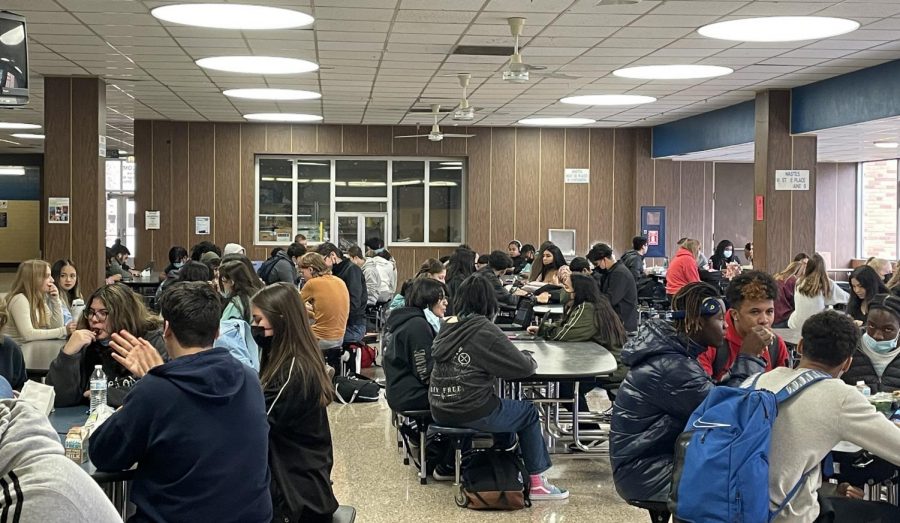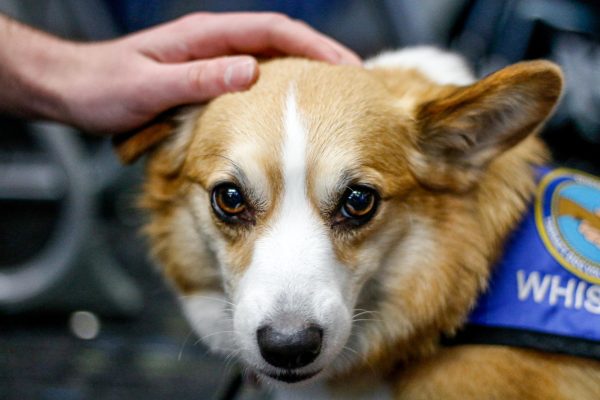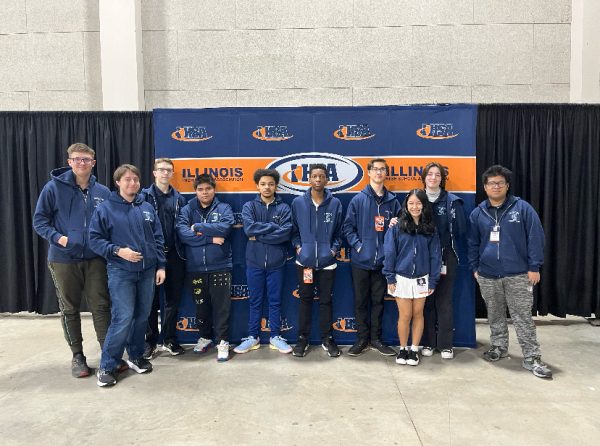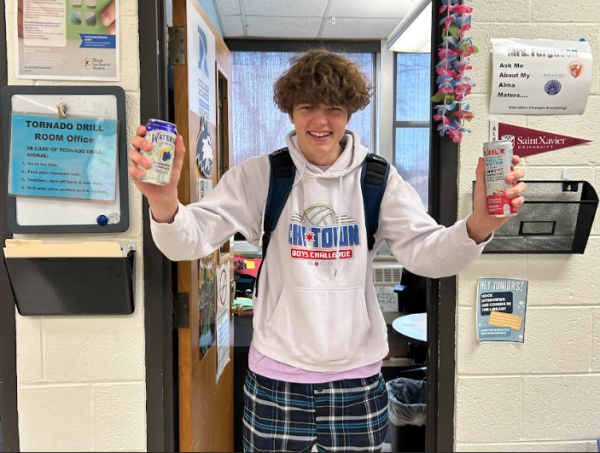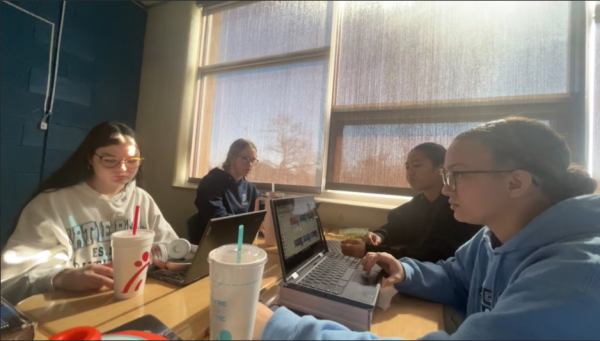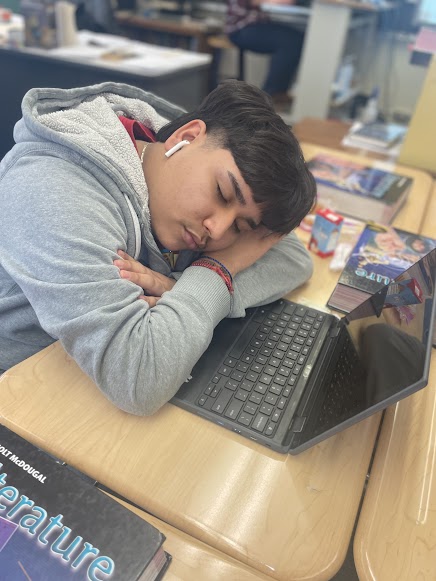Off-campus lunch suspended to allow for policy changes
Students crowd into the Commons for a packed lunch period. Close to half of all students took advantage of off campus lunch prior to the suspension.
During the week of October 25, off-campus lunch, a privilege that has been in place for nearly 5 years, was put on hold.
The lunchrooms were packed with students, illustrating the sheer number of students that would ordinarily go off campus every day. The blaring blabbing of disappointed students echoed as they picked at half-eaten lunches, wishing it was a meal from their favorite fast-food place.
“I think everybody needs a break,” said Mr. Gus Carter, principal. “The cafeteria and the commons are crowded, we are all wearing masks, we are all very tired.”
Typically, off-campus lunch is a privilege given to juniors and seniors, to drive and eat lunch somewhere other than at the school. However, because of the pandemic, the administration was letting all students leave campus, as long as they weren’t walking off of campus.
But the relaxed policy was only temporary. On October 22, an email was sent out saying that off-campus lunch would be suspended from the 25-29, with a new policy being introduced on November 1.
“We shut down for a week just to give us, the admin team, time to get the structure,” said Mr. Carter. “It wasn’t a punishment to students.”
The policy would no longer allow freshmen and sophomores to participate, and required juniors and seniors to fill out a permission form, as well as scan a school ID before leaving.
“I don’t like it,” said Maddy Johnson, sophomore. “I don’t want to sit in the cafeteria when there’s the option to go and get food from somewhere else.”
Since there were a large number of students walking to get lunch, it was assumed by the student body that the walking was the main reason for the shutdown, and change of policy.
“Just because people were walking where they weren’t supposed to doesn’t mean they should punish everybody,” said Johnson.
But in the administration’s opinion, it was more about the number of students flocking out of the building during lunches and controlling those numbers.
“It was simply the sheer volume of kids that were out of the building, and the number of places you could go in a timely manner is pretty small,” said Mr. Carter. “The number of students that we had leaving was just too much.”
While a lot of students go to the local food places for off-campus lunch, a vast majority of them prefer going home.
“I do it because it breaks up my day, and doesn’t seem as long,” said Brielle Neiber, junior.
“And I like to eat food at home.”
The changes in off-campus lunch policy, after a week’s suspension, have been introduced, filtering the number of students leaving campus. Juniors and seniors have continued to utilize the privilege as self-care during the school day.
“Go off-campus, go home, go sit at a restaurant, wherever. Recharge,” said Mr. Carter. “Take your mask off, come back ready to get back after the afternoon, and be a student.”

Howdy! I’m Chase Hunter :) and I am one of the copy editors for the Voyager. I am a Junior at Guilford, and this is my first year in Newspaper....


